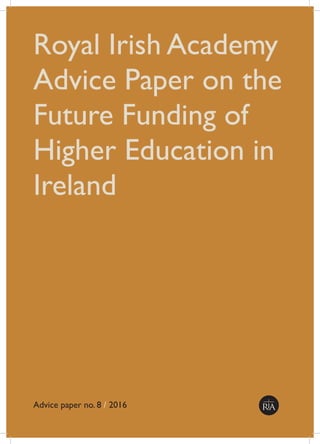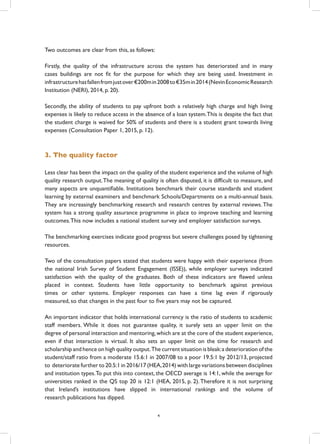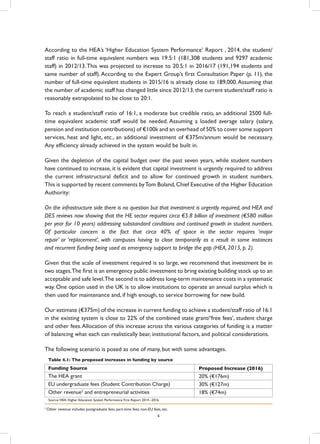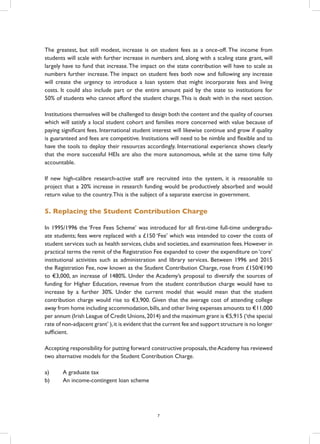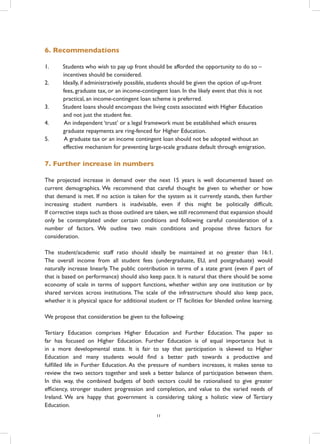This document provides recommendations from the Royal Irish Academy on funding higher education in Ireland. It finds that higher education has faced budget cuts and increased student numbers, negatively impacting quality. It proposes increasing academic staff by 25-30% to achieve a student/staff ratio of 16:1, replacing the student contribution charge with income-contingent loans, and establishing an emergency public fund and allowing institutions to operate surpluses to invest in infrastructure maintenance and new buildings. Overall it calls for a balanced and increased approach to funding from multiple sources to support higher education in Ireland.
